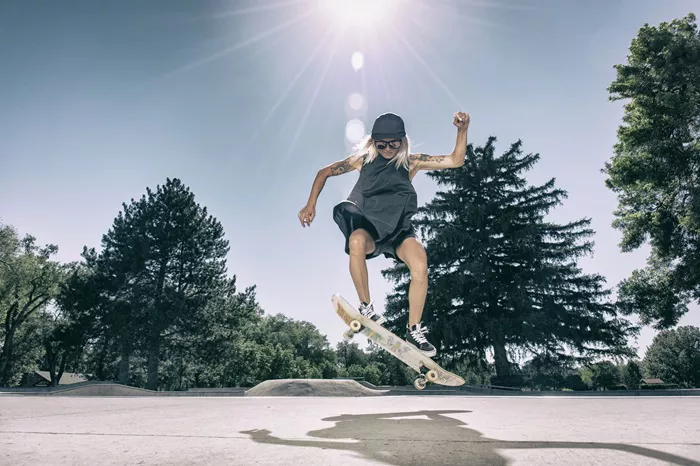Skateboarding is an exhilarating sport that combines creativity, skill, and physical exertion. However, it also comes with its fair share of risks, particularly when it comes to injuries. One common issue that many skateboarders face is ankle pain. Understanding the reasons behind this discomfort is crucial for both prevention and recovery. This article delves into the various factors that contribute to ankle pain after skateboarding, offering insights into anatomy, mechanics, and injury prevention strategies.
The Anatomy of The Ankle
To comprehend why ankles hurt after skateboarding, it’s essential to understand the anatomy involved. The ankle joint consists of several key components:
Bones: The primary bones include the tibia (shinbone), fibula (the smaller bone next to the tibia), and talus (the bone that sits above the heel).
Ligaments: These are strong bands of tissue that connect bones to each other. The lateral ligaments on the outside of the ankle are particularly vulnerable during skateboarding.
Tendons: Tendons connect muscles to bones, allowing for movement. The Achilles tendon is a crucial tendon for skateboarders as it facilitates foot movement.
Muscles: The muscles surrounding the ankle provide stability and mobility. Weakness or imbalances in these muscles can lead to pain.
Common Causes of Ankle Pain After Skateboarding
1. Inadequate Footwear
Wearing improper footwear is one of the primary reasons skateboarders experience ankle pain. Skate shoes are designed to provide support and grip, but not all shoes offer adequate ankle protection. Flat-soled shoes can lead to instability and increase the risk of rolling an ankle.
2. Ankle Sprains
Ankle sprains are common injuries in skateboarding, often occurring when a skateboarder lands awkwardly or loses balance. A sprain happens when ligaments are stretched or torn, leading to pain, swelling, and difficulty moving the ankle.
SEE ALSO: What Size Skateboard Deck Should I Buy?
3. Overuse Injuries
Skateboarding requires repetitive motions that can lead to overuse injuries. Continuous stress on the ankle joint without adequate rest can cause inflammation in tendons (tendinitis) or irritation of the joint itself (arthritis).
4. Poor Technique
Improper skating techniques can place undue stress on the ankles. For example, landing tricks incorrectly can result in excessive force being applied to the ankle joint, leading to pain and potential injury.
5. Weak Muscles and Imbalances
Weakness in the muscles surrounding the ankle can contribute to instability and increase susceptibility to injury. Strengthening these muscles is vital for maintaining proper alignment and support during skating.
6. Surface Conditions
The type of surface on which one skates can also affect ankle health. Rough or uneven surfaces may increase the risk of losing balance and rolling an ankle, while smoother surfaces may provide better stability.
7. Previous Injuries
A history of previous ankle injuries can predispose skateboarders to recurrent pain. Scar tissue from past injuries may alter biomechanics, leading to further discomfort during skating activities.
8. Lack of Warm-Up
Failing to warm up properly before skating can lead to stiffness in the muscles and joints, increasing the risk of injury. A good warm-up routine prepares the body for physical activity by enhancing flexibility and blood flow.
9. Inadequate Recovery Time
Skateboarders often push their limits without allowing sufficient recovery time between sessions. This lack of rest can exacerbate existing injuries or lead to new ones.
Preventing Ankle Pain While Skateboarding
To minimize the risk of experiencing ankle pain while skateboarding, consider implementing these strategies:
1. Choose Appropriate Footwear
Invest in high-quality skate shoes that provide adequate support and cushioning for your ankles. Look for shoes with reinforced sides and a padded collar for added protection.
2. Strengthen Ankle Muscles
Incorporate strength training exercises focused on the ankles and lower legs into your routine. Exercises like calf raises, toe taps, and resistance band workouts can enhance muscle strength and stability.
3. Practice Proper Techniques
Focus on mastering proper skating techniques before attempting advanced tricks. This includes learning how to land correctly and maintaining balance throughout maneuvers.
4. Warm Up Before Skating
Engage in a thorough warm-up routine that includes dynamic stretches targeting the ankles and legs before hitting the skateboard.
5. Gradually Increase Intensity
Avoid jumping into high-intensity sessions without proper conditioning. Gradually increase your skating intensity to allow your body to adapt.
6. Rest and Recover
Give your body time to recover between skating sessions, especially if you feel any discomfort or fatigue in your ankles.
7. Be Mindful of Surface Conditions
Choose smooth surfaces for skating when possible, and be aware of any obstacles or irregularities that could lead to falls or injuries.
When to Seek Medical Attention
If you experience persistent or severe ankle pain despite implementing preventive measures, it may be time to consult a healthcare professional:
Persistent Pain: If pain lasts more than a few days or worsens with activity.
Swelling: Significant swelling around the ankle joint.
Difficulty Walking: Inability to bear weight on the affected foot.
Deformity: Visible deformity or misalignment in the ankle joint.
Conclusion
Ankle pain after skateboarding is a common issue that can arise from various factors including inadequate footwear, improper technique, overuse injuries, and muscle imbalances. By understanding these causes and implementing preventive measures such as choosing appropriate footwear, strengthening muscles, practicing proper techniques, warming up adequately, gradually increasing intensity, resting sufficiently, and being mindful of surface conditions, skateboarders can minimize their risk of injury while enjoying this thrilling sport.
Related topics:
- How to Make a Skateboard Ramp?
- Is Skateboarding a Great Workout?
- Who Invented the Ollie in Skateboarding?

